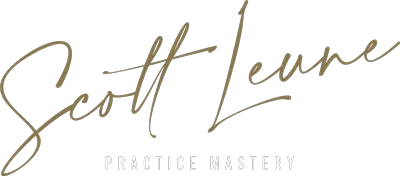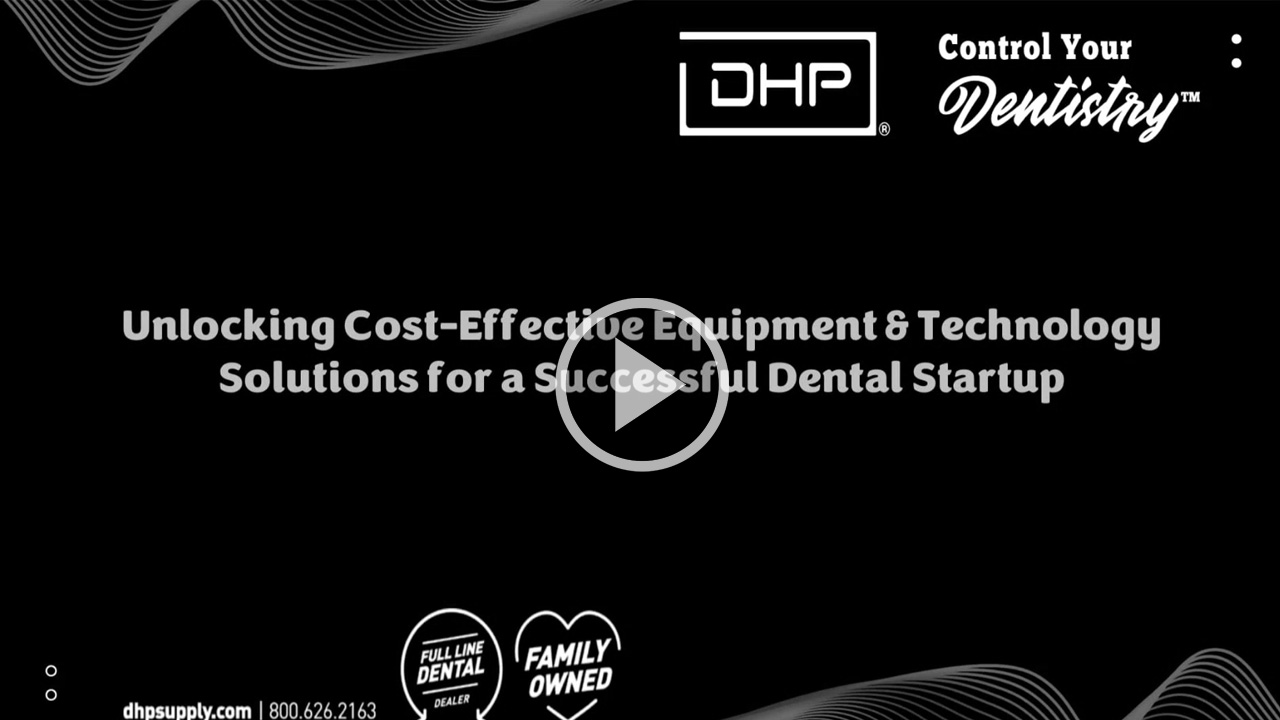Building a Cost-Effective Dental Practice with the Right Equipment
Hosted by Dr. Scott Leune, this webinar zeroed in on one of the most misunderstood areas of launching a dental practice: how to equip your office without sabotaging your budget. With startup funds stretched thin due to rising construction and marketing costs, Scott believes dentists must rethink how they approach dental equipment and technology. The session challenged the traditional models of spending, urging dentists to move away from prestige-brand purchases and instead invest in equipment that’s functional, reliable, and cost-efficient.
About the Webinar
This session featured Greg Kay from DHP, a dental equipment supplier focused on practical solutions for startups. Together with Scott, Greg shared insights into how dentists can reduce dental practice setup costs by tens—sometimes hundreds—of thousands of dollars without compromising patient experience or clinical quality. The session explored real pricing differences, product functionality, and strategic decisions that can impact practice growth from day one.
About the Host and Guest
- Dr. Scott Leune is one of the most recognized names in dental business education. Scott Leune coaches startup and growth practices across the country and believes most dentists are losing money before they ever open their doors—mainly due to poor equipment decisions. His approach prioritizes cost-effective dental equipment that leaves room in the budget for dental practice technology and aggressive marketing.
- Greg Kay is a seasoned expert at DHP who has helped hundreds of dentists navigate the equipment selection process. He specializes in identifying high-performing, budget-conscious alternatives to overpriced industry staples and supports practices looking to modernize without overspending.
Key Highlights
1. “Most dental startup equipment purchases are misguided.”
Scott emphasized that most startups blow their budgets on chairs and cabinetry that do nothing to improve clinical care or patient experience. A typical operator chair may cost $11,000, yet equally functional alternatives exist for $3,500–$4,000. In Scott’s view, the dental equipment you choose should be new, well-supported, and value-driven—not a luxury item disguised as a necessity.
2. “Dental practice setup costs skyrocket due to unnecessary cabinetry.”
Scott believes that custom cabinetry is one of the most wasteful expenditures in new practices. Side cabinets can run $6,000–$8,000 per operatory and add no clinical value. He urges startups to avoid unnecessary casework and adopt a minimalist layout that allows more treatment rooms within the same footprint. For Scott, fewer cabinets mean more chairs—and more chairs mean more production.
3. “Redundancy is power in an operatory.”
Scott stressed the importance of uniformity across rooms. When every op is interchangeable, hygiene and restorative can shift without downtime. Unique layouts per room reduce flexibility and increase setup costs. Instead, Scott advocates for operatory consistency: same chairs, same delivery, same layout. This builds operational efficiency and simplifies staff training.
4. “The real return is in dental practice technology—not overpriced equipment.”
In Scott’s view, skipping core technologies like CBCT, scanners, and 3D printers is the real cost of overspending on chairs and cabinets. He emphasized that today’s startup dentist must think beyond basic functionality and embrace technology that enhances diagnosis, improves case acceptance, and supports same-day dentistry.
- Intraoral scanners: Scott views them as non-negotiable. Patients hate impressions, and scanners are now affordable with no recurring fees.
- CBCT: Scott believes 3D imaging is fast becoming standard of care. New 16×10 field of view units are available for under $40,000.
- 3D printing: From night guards to permanent restorations, Scott sees 3D printing as dentistry’s future—and one of the best ways to reduce ongoing lab costs.
5. “Startups need a smarter lab design to support digital dentistry.”
Scott emphasized that many new practices build outdated labs—small, cluttered, and not suited for digital workflows. He advocates for modern dental labs that incorporate vertical space with towers, proper dust containment, and tech-forward cabinetry. He also encourages integrating tip-out bins as backsplash storage and planning for 12+ feet of linear space to accommodate printing, curing, washing, and milling.
6. “Sterilization has evolved, and startups should adapt.”
Scott spotlighted dry heat sterilization as an overlooked opportunity. These systems require no water, reduce instrument corrosion, and complete cycles faster. Unlike traditional steam autoclaves (e.g., M11s), dry heat units cost less up front and cost significantly less to maintain over time—about $260 annually vs. $2,500+. Scott believes this switch can improve efficiency and reduce long-term operating costs.
7. “Same-day dentistry should be realistic—not aspirational.”
Scott acknowledged that same-day milling (e.g., with CEREC) is often pushed too early in a startup’s life. These systems require a high monthly case volume and come with steep learning curves. Instead, he recommends starting with 3D printing, which can offer same-day results at a fraction of the cost and is now capable of producing all-ceramic and zirconia-reinforced permanent restorations.
8. “Refurbished dental equipment rarely makes sense.”
Scott was blunt: refurbished chairs and older technology often cost nearly as much as new, budget-conscious options but come with no warranties and outdated design. He sees them as a false economy—dentists end up buying someone else’s problem. He advises startups to buy smart, not secondhand.
9. “Dental handheld x-ray units are more practical than wall-mounted units.”
Scott prefers handheld devices over traditional wall-mounted systems. They emit less radiation, cost less overall, require no construction bracing, and are more versatile. Handheld units today cost $3,500–$4,000 and can cover multiple rooms, making them the more agile and affordable option.
10. “Reprogram your mindset—or risk wasting six figures.”
Scott closed the webinar with a strong call to rethink what dentists consider “normal” when outfitting a new office. He believes dental equipment companies have conditioned doctors to believe high-cost brands are necessary—when in fact, better options exist for a fraction of the cost. He insists that breaking this conditioning is the only way to build a modern, profitable practice from day one.
Check out more webinars by Dr. Scott Leune
Conclusion
Dr. Scott Leune makes one point clear: how you spend your equipment budget can make or break your dental startup. You don’t need top-shelf brands—you need practical tools that deliver results.
Buying smart doesn’t mean cutting corners. It means investing in cost-effective dental equipment that frees up resources for essential dental practice technology like CBCT, intraoral scanners, and 3D printers. It means designing operatories and labs that actually support growth—not just look good on opening day.
Scott believes that when dentists stop overspending on chairs and cabinets, they can start building practices that are lean, modern, and profitable. Practices that attract top-tier staff. Practices that patients trust. Practices that scale fast.
Every dollar saved on setup costs is a dollar you can reinvest in patient care, staff efficiency, and long-term success. That’s the mindset shift Scott wants every dentist to make.
If you’re opening or rethinking your practice, this is your chance to build smarter—from the ground up.

